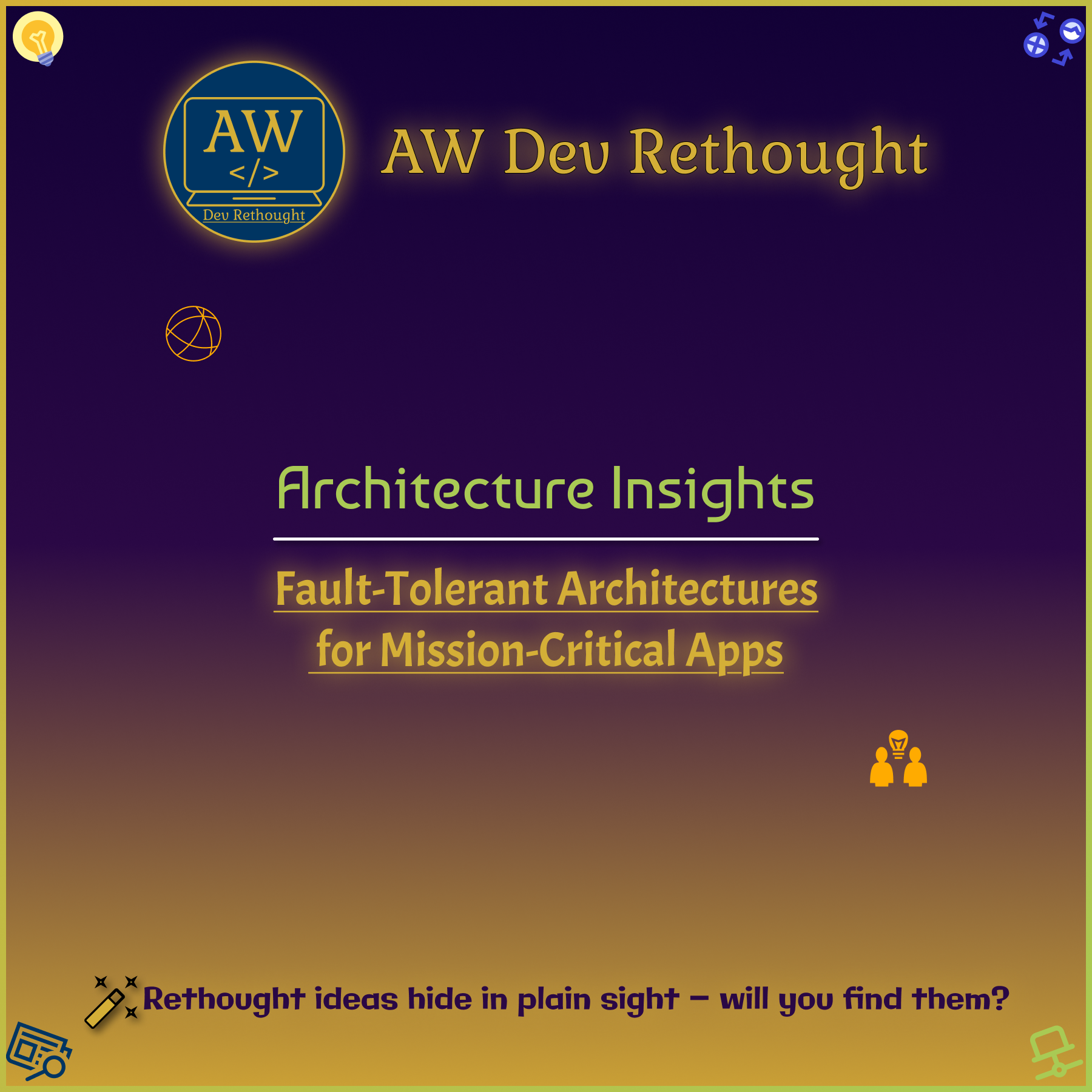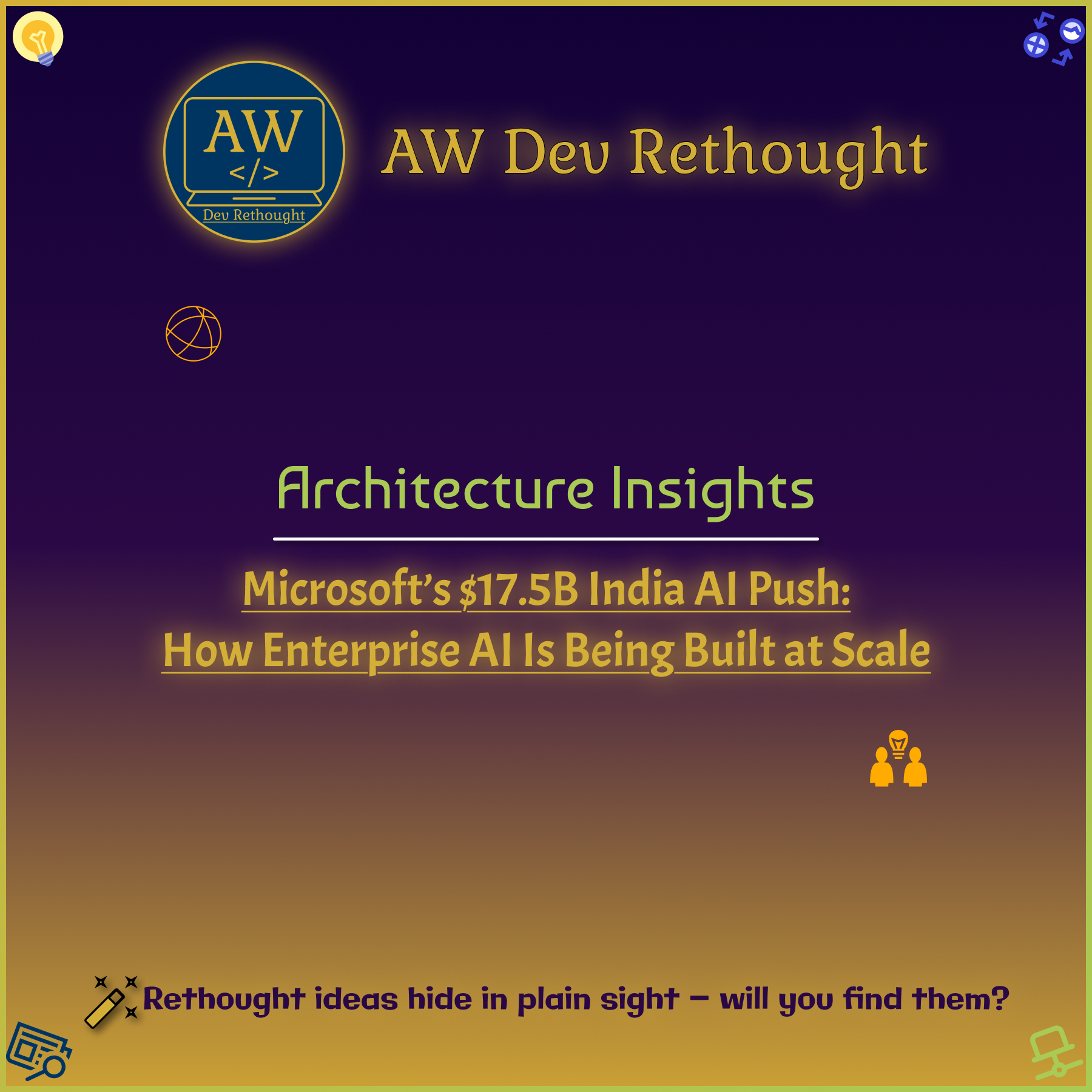Architecture Insights: Event-Driven Architecture - When and Why to Use It
Introduction
Modern applications are no longer just request-response systems. Businesses today demand real-time responsiveness, whether it’s a payment system confirming transactions instantly or a ride-sharing app updating driver locations live. This is where Event-Driven Architecture (EDA) shines.
In this post, we’ll explore what EDA is, when to use it, and why it’s becoming the backbone of scalable, reactive systems.
What is Event-Driven Architecture?
Event-Driven Architecture is a design pattern where applications react to events (changes in state) instead of relying on direct calls.
- Event: A record of something that happened (e.g., “Order Placed”).
- Event Producer: The system that emits the event.
- Event Consumer: The system that listens and reacts.
- Event Broker: Middleware (like Kafka, SNS/SQS) that routes events between producers and consumers.
Instead of tightly coupling services, EDA allows components to communicate asynchronously through events.
Quick Diagram:

Figure: Event-Driven Architecture – Producer, Broker, and Consumers
When to Use Event-Driven Architecture
- Real-Time Processing
- Use when systems need instant reactions (e.g., fraud detection, IoT telemetry).
- Scalable Microservices
- Ideal for decoupled micro-services that need to work independently but still coordinate.
- Complex Workflows
- Great for systems with many steps (e.g., order → payment → inventory → shipping).
- IoT Applications
- Billions of IoT devices stream data as events, making EDA a natural fit.
- Analytics Pipelines
- For event logs, clickstreams, or sensor data where continuous ingestion is critical.
Why Event-Driven Architecture Matters
- Loose Coupling → Services don’t need to know about each other directly.
- Scalability → Consumers can scale independently based on event load.
- Flexibility → New consumers can be added without changing producers.
- Resilience → Systems keep functioning even if some consumers are down.
Common Tools & Services
- Apache Kafka – High-throughput distributed event streaming.
- RabbitMQ – Popular open-source message broker.
- AWS SNS/SQS – Scalable pub/sub and queueing services.
- Azure Event Hubs / GCP Pub/Sub – Cloud-native event brokers.
Pro Tip
Start with well-defined event contracts (schemas) to avoid chaos. A messy event stream leads to debugging nightmares later. Tools like Schema Registry (Kafka) or EventBridge Schemas (AWS) help standardise.
Takeaway
Event-Driven Architecture enables real-time, scalable, and resilient systems by shifting communication from direct calls to asynchronous events.
Use it when you need real-time responses, complex workflows, or highly scalable microservices. But remember: the flexibility comes with added complexity — event tracking and debugging must be planned carefully.
👉 New to Event-Driven Architecture? Start with our introduction: Event-Driven Architecture Explained Simply




No comments yet. Be the first to comment!